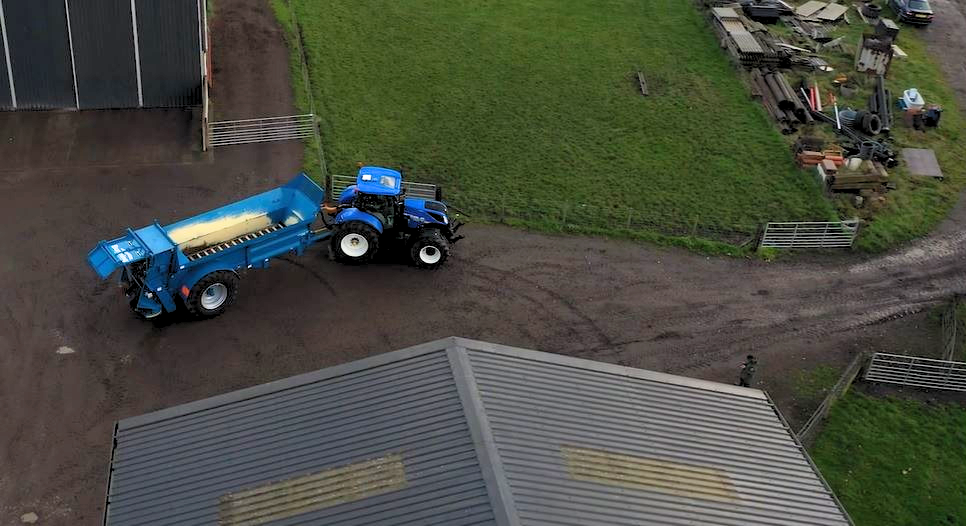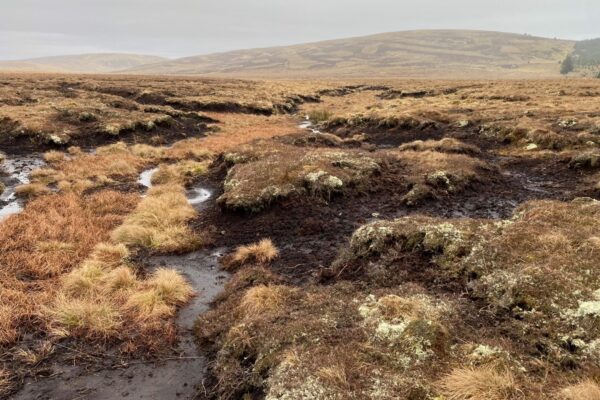Making Sense of Soil Carbon
18 July 2024This article is part of the Climate Change & Carbon Research Briefings series. More articles in the series can be found below:
- Understanding Natural Capital Markets
- Collecting On-Farm Biodiversity Data with Bioacoustics
- Faba Beans for Alternative Protein and Reducing Monogastric Carbon Footprint
- Applicability of Slurry Separation and Acidification on Farms in Scotland
- Advancing Agricultural Practices, Reducing Emissions and Ensuring Sustainable Growth in the Face of Climate Challenges
- Are Methane Inhibitors a Silver Bullet for the Sustainability of Beef and Dairy?
- Mitigating N2O Emissions and Enhancing Yields with Inhibitors and Liming
- Low Emissions Livestock Breeding - The What and the Why
Understanding soil carbon is crucial for sustainable farming practices. This guide is designed to demystify the jargon surrounding soil carbon and indicate proven practices to improve soil carbon sequestration.
In this guide, you will:
- Learn the essential terms related to soil carbon.
- Understand how these concepts impact your farming practices.
- Discover practical tips for managing soil carbon on your farm.
What is soil carbon and why is it important?
Soil carbon is vital for maintaining soil structure, fertility, and water retention. It also plays a crucial role in mitigating climate change by sequestering carbon dioxide from the atmosphere.
Generally, we estimate soil carbon by measuring the organic matter of soil which is, on average, 58% carbon. Whilst this method provides a good indication of soil carbon, more direct methods involve measuring the carbon dioxide released when burning the soil. It is important to know the distinction between soil organic matter and soil carbon as the carbon proportion of soil organic matter does vary.

Types of soil carbon
Not all soil carbon is created equal. Broadly, soil carbon falls into the following two categories:
Organic Carbon: This is the carbon component of organic compounds found in soil. It includes plant residues, microorganisms, and humus.
Inorganic Carbon: Found in minerals and soil particles, this type of carbon is not part of organic compounds.
You may come across other terms which give more information about the soil carbon type. some types of carbon can be more ‘locked into the soil’ than other types due to the reactions within the soil and the nature of carbon additions. For these reasons, researchers are interested in the form of soil carbon as an indicator of the persistence in the soil in the long term. However, some types of degradable carbon have been known to stay in the soil for millennia – the environment and management will also dictate how long soil carbon persists. Here are some of the other terms you might encounter:
Mineral Associated Organic Carbon
Researchers can isolate the fine silt and sand proportion of the soil and then measure the carbon associated with it – this portion is likely to persist in the soil for a longer duration as it is indicative of the carbon bound to the minerals.
Particulate Organic Carbon
Particulate Organic Carbon (POC) consists of small fragments of decomposed plant and animal material found in the soil. It is a crucial component of soil organic matter, contributing to soil fertility and structure by enhancing nutrient availability and water retention. Due to its nature, it is very quick to be turned over by the soil microorganisms and released back into the atmosphere as Carbon Dioxide.
Labile Carbon or Labile Organic Matter
The term labile refers to the nature of the material being quick to turnover, such as Particulate Organic Carbon.
Recalcitrant Carbon
Recalcitrant Carbon is highly resistant to decomposition by soil microorganisms due to its complex and stable chemical structure. It remains in the soil for long periods, contributing to long-term carbon storage and soil stability. Mineral Associated Carbon is a type of recalcitrant carbon, other types include biochar, charcoal and large complex carbohydrate molecules.
How soil carbon sequestration works
Soil carbon sequestration is the process of capturing atmospheric carbon dioxide and storing it in the soil. To conclude that net carbon sequestration is taking place, the carbon storage must exceed the carbon release in the environment.
Conversion of arable land to grassland results in soil carbon sequestration and we know that it can take approximately 100 years for soils to plateau when moving from a low-carbon state to a high-carbon state under grassland.

Figure 1: Increase in soil organic carbon to 23cm depth calculated from total N values assuming a C:N ratio of 10:1. N values were taken from a number of silty clay loam soils sown to grass from cropland at Rothamsted, UK. (Smith, 2014)
This has led researchers to conclude that soil carbon reaches an equilibrium, beyond which it is unlikely more soil carbon can be stored. However, we are starting to see evidence that the way the grass is grazed can influence soil carbon storage (e.g. Cell Grazing Supports Double The Livestock Per Hectare Of Set-Stocking And Delivers Environmental Benefits), and we know that actions that promote grass productivity will benefit soil carbon storage, so perhaps a greater equilibrium is possible.
To offset the carbon produced by two cows grazing per hectare, the soil would need to store more than 1 t of carbon per year. For those measuring soil organic matter, this might be seen from a typical medium soil going from 8% organic matter to 8.4% organic matter over 10 years (assuming 1.3g soil/cm3 and 58% of organic matter is carbon and considering just the top 30cm of soil). This may be achievable with good grassland management, however, the greater the baseline carbon, the more challenging it is to store more carbon. Soil carbon is easier to lose than it is to gain and therefore conservation is the priority.
Managing soil carbon in grassland
The following are proven strategies that improve soil carbon in Grassland:
Increase grass yield: Plant production is the mechanism in which carbon is extracted from the atmosphere thereby methods to increase plant production will increase likelihood of soil carbon storage. Sowing high yielding species, utilising legumes and diverse swards will help achieve this objective most sustainably. Applying artificial fertiliser will increase soil carbon but the use of fertiliser has other greenhouse gas emissions and is therefore a less sustainable option.
Organic manures provide additional carbon back into the soil and also promote plant productivity but the application may result in other greenhouse gas emissions as well, depending on conditions at time of spreading and storage.
Limit bare ground: this removes opportunity for plant productivity and also leaves soil prone to erosion.
Manage compaction risk: Compacted soils are less able to function for plant production and therefore will have limited soil carbon sequestration potential.
Consider silage/hay fields: If removal of grass is not coupled with a return of the equivalent quantity of organic mater and nutrients then the soil health and carbon will likely deteriorate.
Agroforestry: Integrate trees and shrubs into your farming system to boost carbon sequestration.
Managing soil carbon in arable ground
The following are proven strategies that improve soil carbon in Arable ground:
Cover Cropping: Plant cover crops to prevent soil erosion and improve soil organic matter.
Maximise grassland: Maintaining areas of long-term grass is going to store soil carbon over the long term. Arable rotations will benefit from grass leys to conserve soil carbon.
Organic Amendments: Use compost and manure to enhance soil carbon levels.
Agroforestry: Integrate trees and shrubs into your farming system to boost carbon sequestration.
Conclusion
By understanding and managing soil carbon, you can enhance soil health, boost crop yields, and contribute to climate change mitigation. Start implementing these practices today to see the benefits on your farm.
If you have further questions, you can contact the FAS advice line for free at advice@fas.scot or by calling 0300 323 0161.
Poppy Frater, SAC Consulting
Further Resources
Sign up to the FAS newsletter
Receive updates on news, events and publications from Scotland’s Farm Advisory Service














